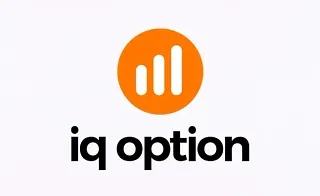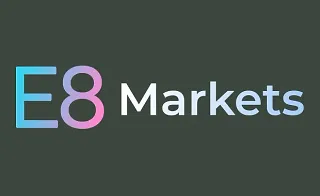The Forex Economic Calendar provides essential economic information related to various forex market assets, including central bank interest rates, unemployment rates, industrial growth, and more.
For traders who want to know what is forex economic calendar, this tool offers structured data that is categorized by importance and the level of impact on asset prices.
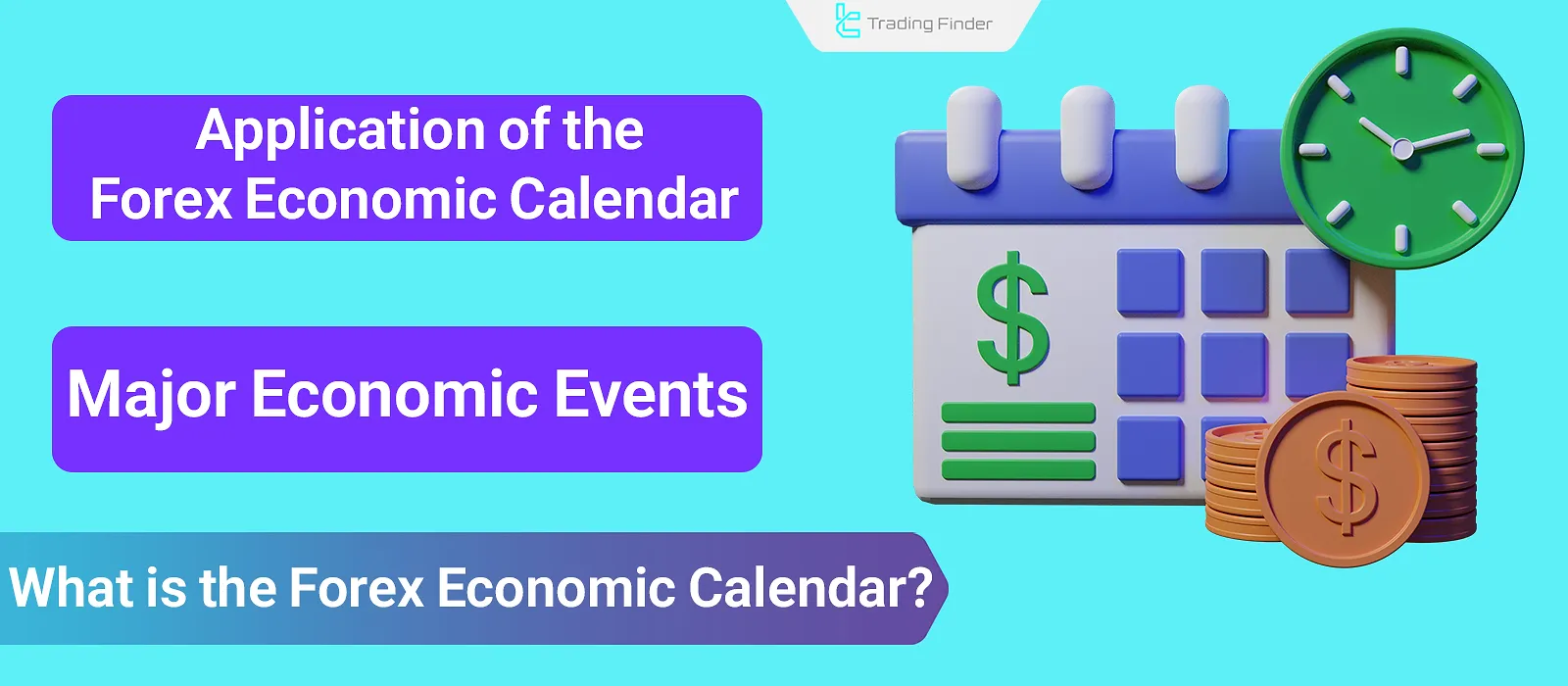
What Is the Forex Economic Calendar?
The Forex Economic Calendar includes data on upcoming economic news reports, statistical releases, and speeches by economic officials—each of which can influence the price trends of specific assets.
This information is published across variable timeframes such as monthly, quarterly, or yearly.
By reviewing this calendar, users can analyze the economic condition of a country.
Applications of the Forex Economic Calendar
Using the information within the Forex Economic Calendar, one can examine various financial factors related to a country’s economy. This data is widely used in fundamental analysis of assets.
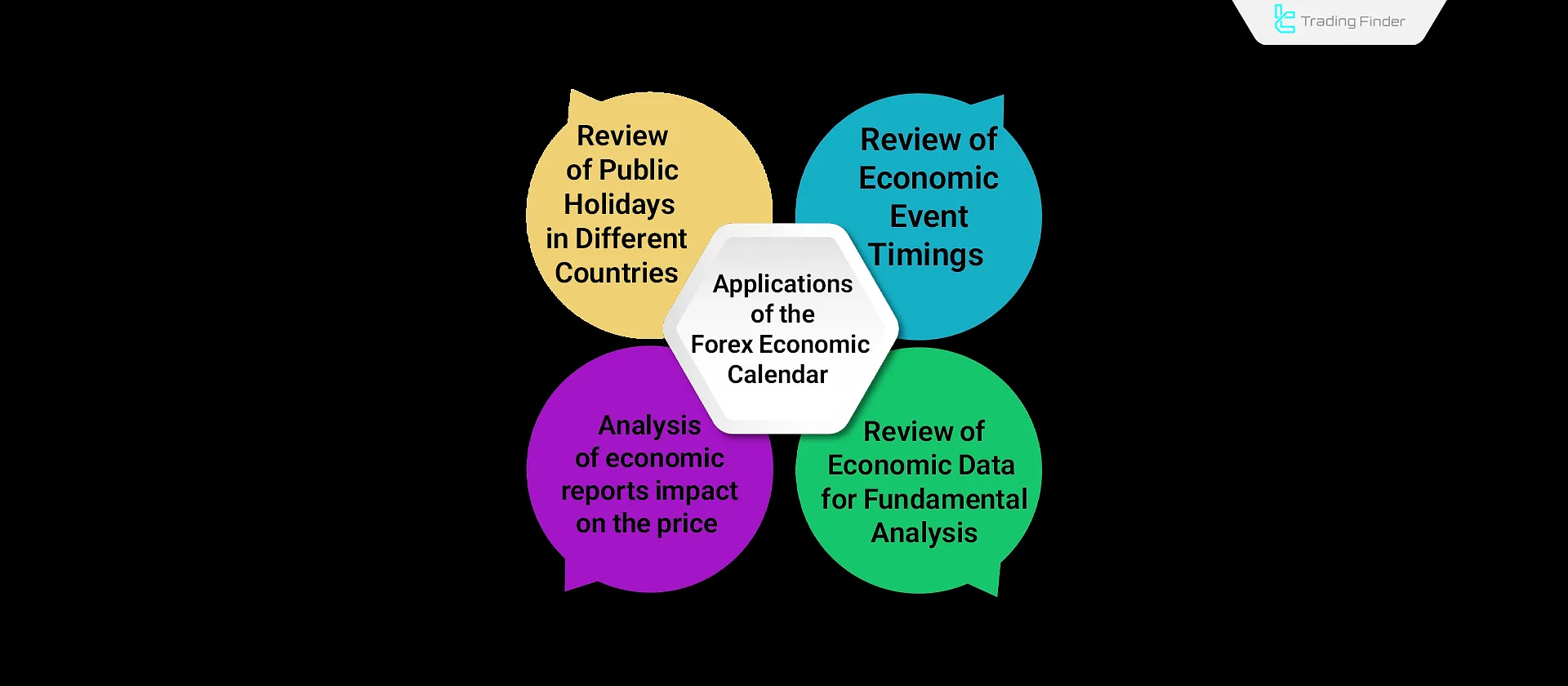
The calendar’s data has a direct impact on both short-term and long-term price volatility. At the time of some key announcements—such as central bank interest rates—price fluctuations can become significantly more volatile.
Moreover, public holidays for each country (which indicate reduced asset volatility on those days) are also listed in the calendar. Key applications include:
- Timing of Economic Events: The publication times of economic reports are displayed;
- Holidays in Different Countries: National holidays are clearly indicated;
- Economic Data for Fundamental Analysis: Key impactful data is provided;
- Post-Report Impact Analysis: Price impact assessments are offered after reports release.
How to Read the Forex Economic Calendar?
Most economic calendars include settings to filter information, allowing users to customize the calendar content based on their preferences.
These settings typically include filters for impact level, country, asset, date, and specific reports.
Each report in the economic calendar contains three key figures:
- Actual: The current value published by the relevant country’s economic authority;
- Forecast: The predicted value or market expectations based on analysts’ assessments;
- Previous: The previously published value for the same report.

Many economic calendars also include a Details section that offers comprehensive insights about a selected report, including potential impacts, scenario analysis, and further explanations.
Major Events in the Forex Economic Calendar
Among the various economic reports, some have greater influence on price trends—such as the Non-Farm Payrolls (NFP) and the Consumer Price Index (CPI).
However, the level of impact may vary depending on current economic conditions.
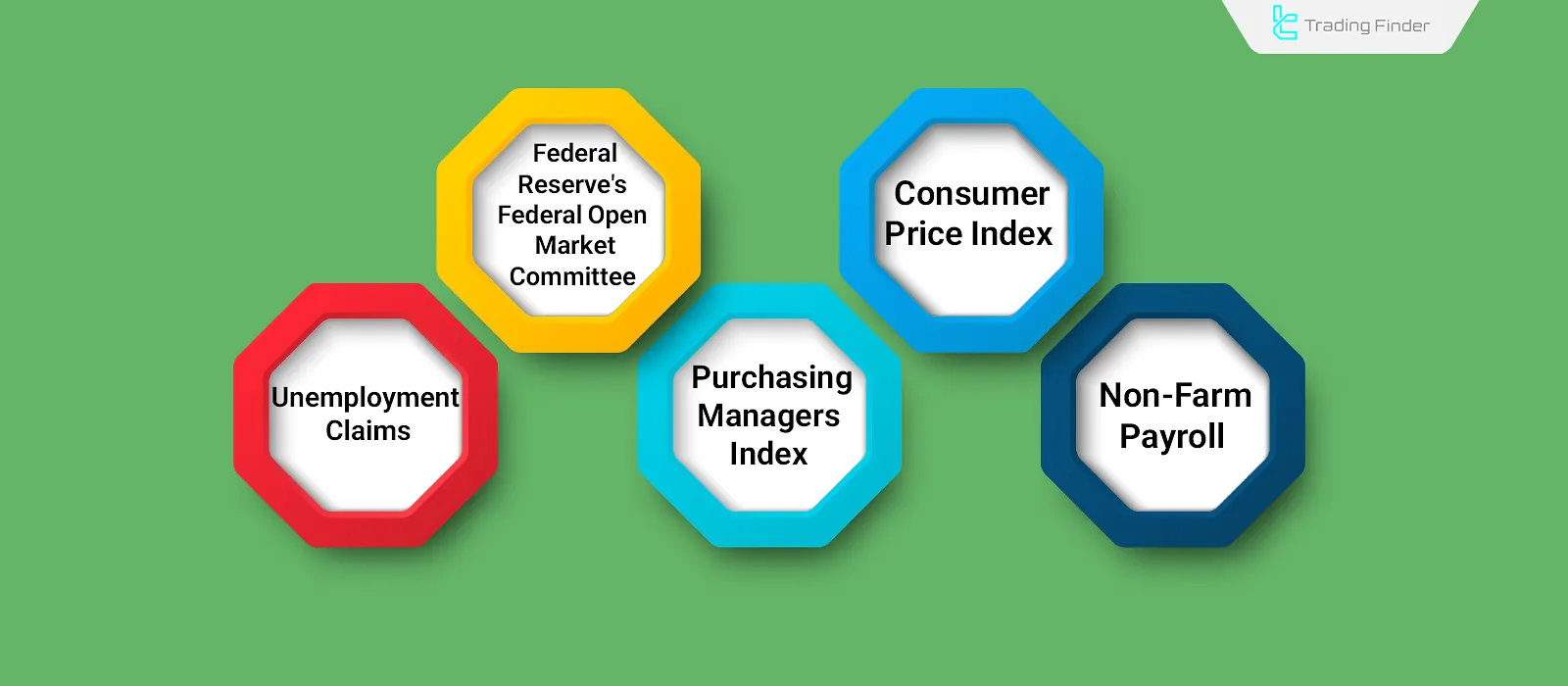
Key events in the Forex Economic Calendar include:
Non-Farm Payrolls (NFP)
The Non-Farm Payrolls (NFP) report is published monthly by the U.S. Department of Labor. It shows how many jobs were added in the non-agricultural sector during the previous month.
This report is released on the first Friday of each month, and typically causes significant volatility in assets linked to the U.S. economy.
Its impact extends beyond short-term price fluctuations, influencing monthly trends as well.
Consumer Price Index (CPI)
The Consumer Price Index (CPI) measures the average change in prices for consumer goods and services.
The index is based on a fixed basket of essential items such as food, energy, healthcare, and more. Each component of the basket is weighted based on its importance in consumer spending.
Purchasing Managers’ Index (PMI)
The PMI is derived from a composite of monthly surveys of leading companies worldwide.
This index measures the performance of specific sectors, such as manufacturing or services. The data is collected via questionnaires sent to purchasing managers and is released monthly.
FOMC Reports and Announcements
The U.S. Federal Reserve is responsible for shaping monetary policy. The FOMC releases announcements, speeches, and statements outlining its policy direction, which can heavily influence market volatility.
The Federal Funds Rate is announced every 45 days by the Fed Chair.
Hawkish and dovish tones in statements and speeches are important since they affect both short-term and long-term price action.
Unemployment Claims
This weekly report measures the number of individuals applying for unemployment insurance. It consists of two key figures:
- Initial Jobless Claims: New claims filed by individuals recently unemployed;
- Continuing Jobless Claims: Claims from individuals already receiving unemployment benefits who are requesting extensions.
How to Use Economic Calendar in Trading?
There are two main approaches to trading around economic report releases:
- Pre-Report Trading
- Post-Report Trading
Pre-Report Trading
This approach involves forecasting the likely outcome of a report based on prior data and market expectations.
Understanding how to use economic calendar in this context allows traders to estimate the expected value, evaluate its potential impact on price action, and identify entry points that align with the probable market movement.
Post-Report Trading
This method does not require prediction. Traders evaluate both bullish and bearish scenarios beforehand and prepare corresponding take-profit and stop-loss orders.
After the report is released, traders quickly enter long or short positions based on the actual market reaction.
Note: During major economic releases, unexpected market behavior—such as widened spreads, price gaps, or order execution delays—may occur due to a surge in trading volume.
Versions of the Forex Economic Calendar
The TradingFinder Economic Calendar is available in three formats:
- Browser Extension
- Application
- Website
Browser Extension
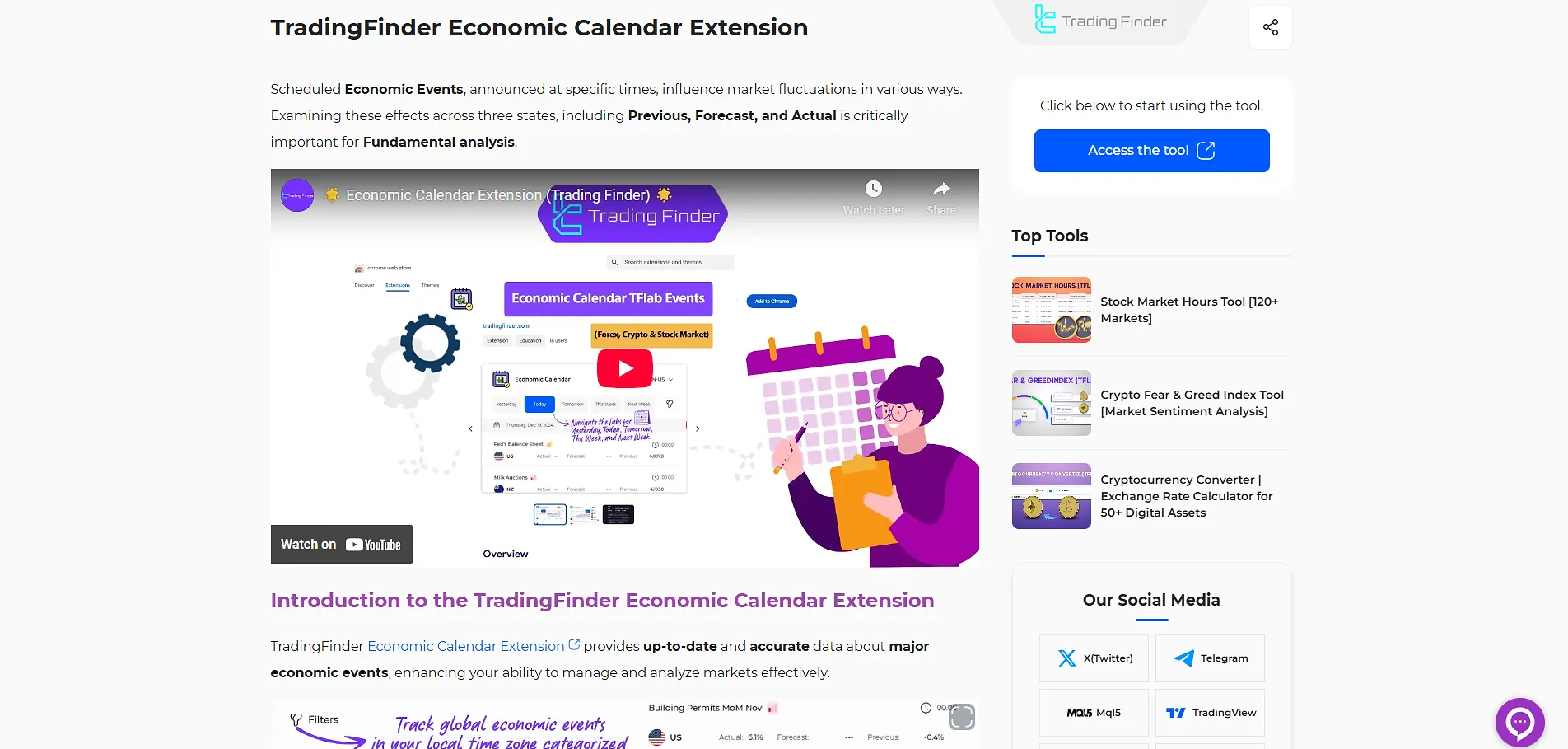
In this version, the TradingFinder Calendar is used as a browser extension, enabling users to view asset charts and economic data simultaneously while reports are being released.
Application
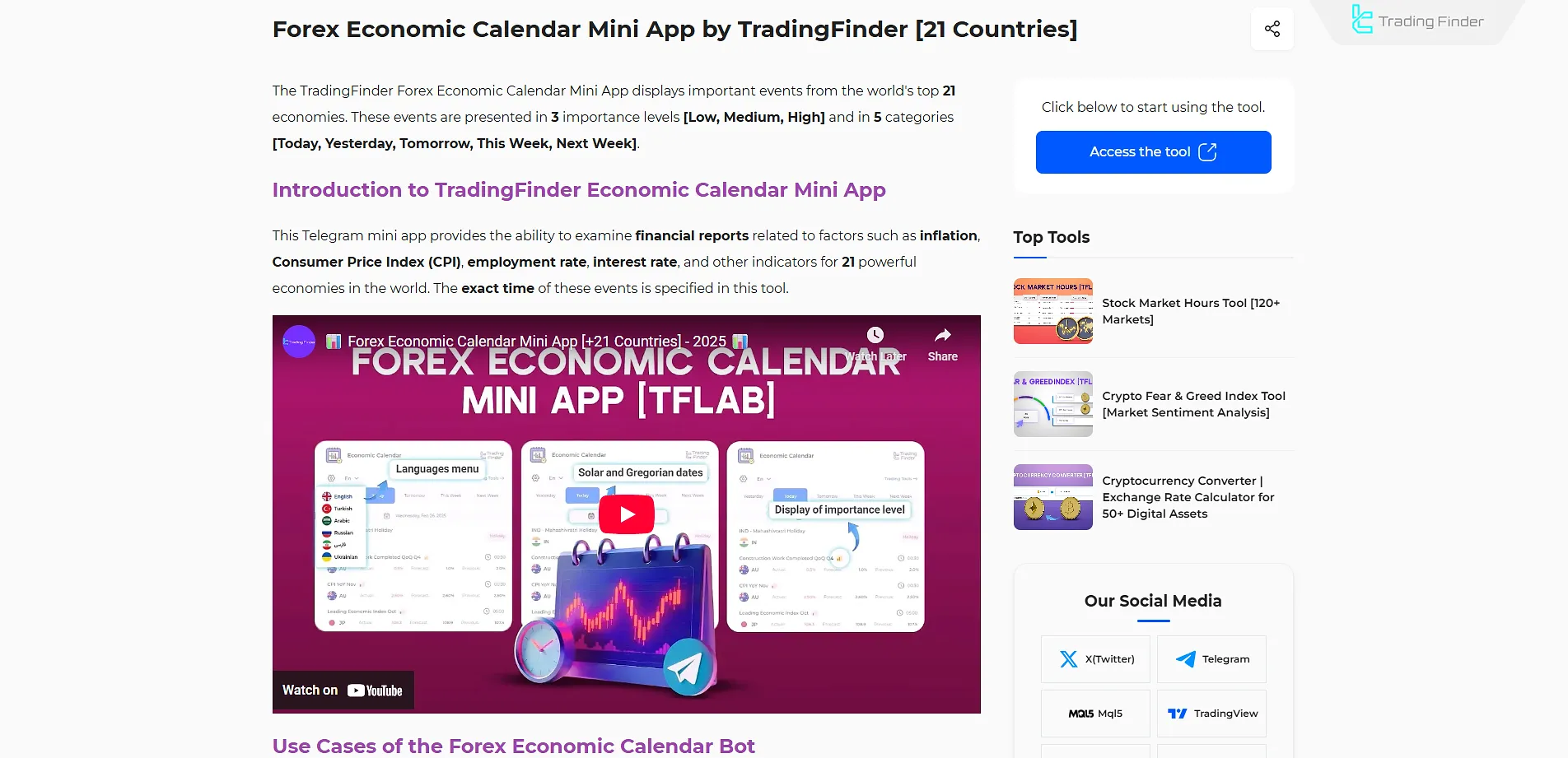
Another version of the calendar is the TradingFinder mini app, which is implemented as aTelegram bot.
While most websites are designed for desktop use and offer limited functionality on mobile, this Telegram-based mini app provides economic report notifications directly on mobile devices.
Website
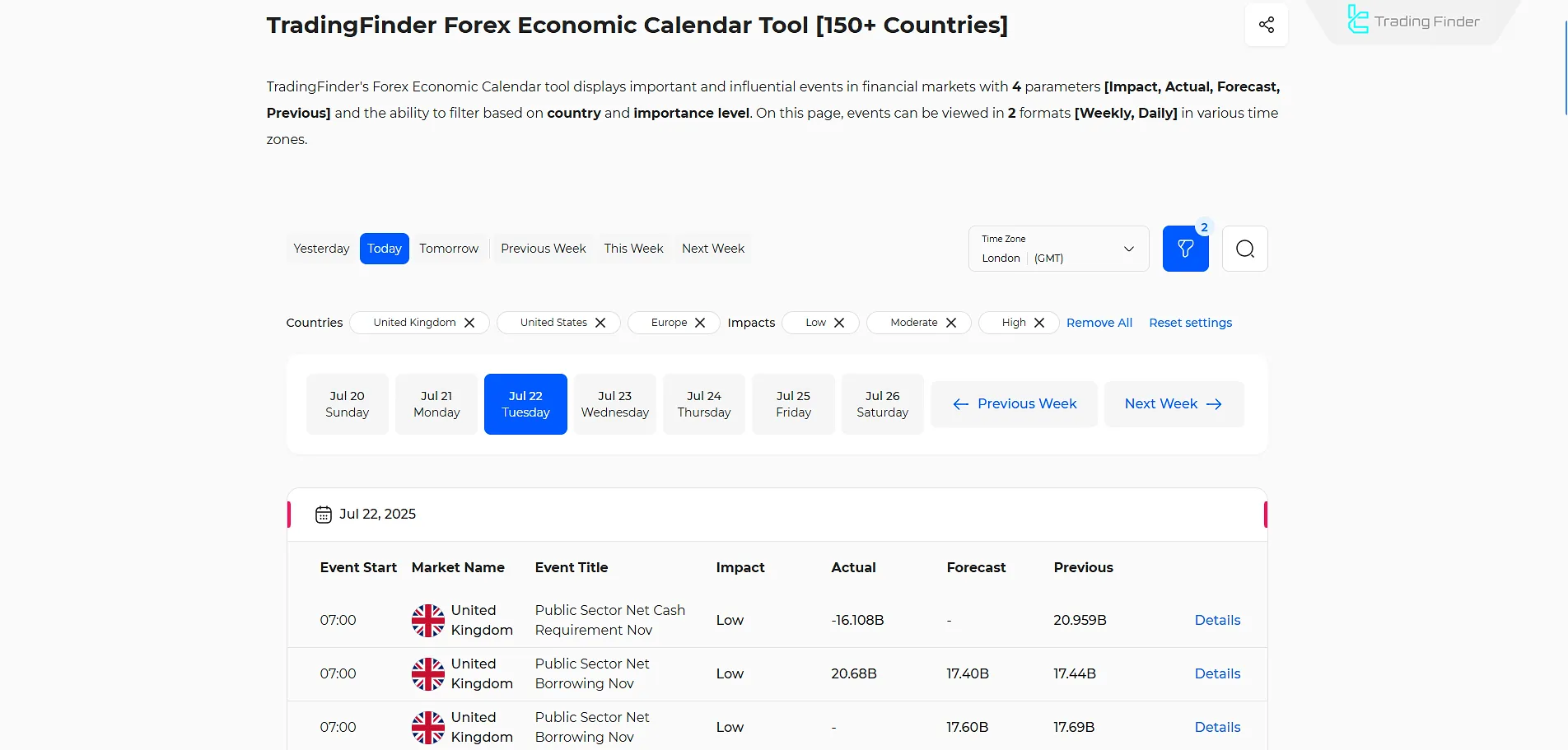
To facilitate easy access without downloading an app or installing extensions,TradingFinder also offers a web-based version of the calendar under the [TFLAB] platform.
Conclusion
The Forex Economic Calendar contains vital information on various economic reports that influence asset prices.
For those seeking to understand what is economic calendar and how it affects trading, each report includes essential details such as release times, historical data, and market forecasts.
Reports are categorized by their impact level on price. More influential reports—such as Non-Farm Payrolls (NFP), Consumer Price Index (CPI), and Purchasing Managers’ Index (PMI)—tend to create more significant price movements.


